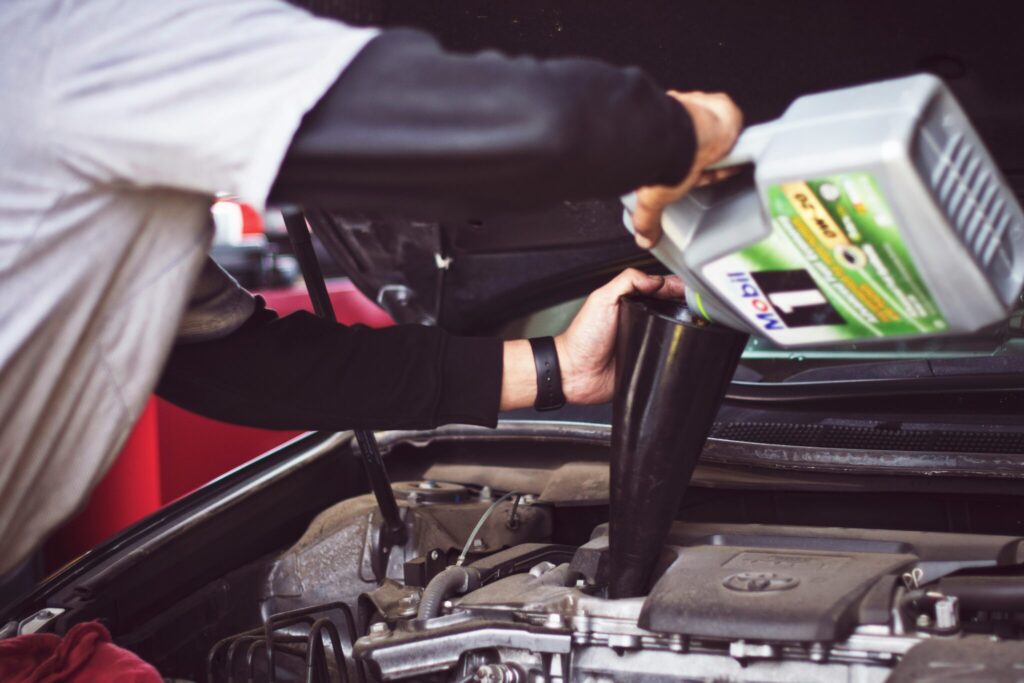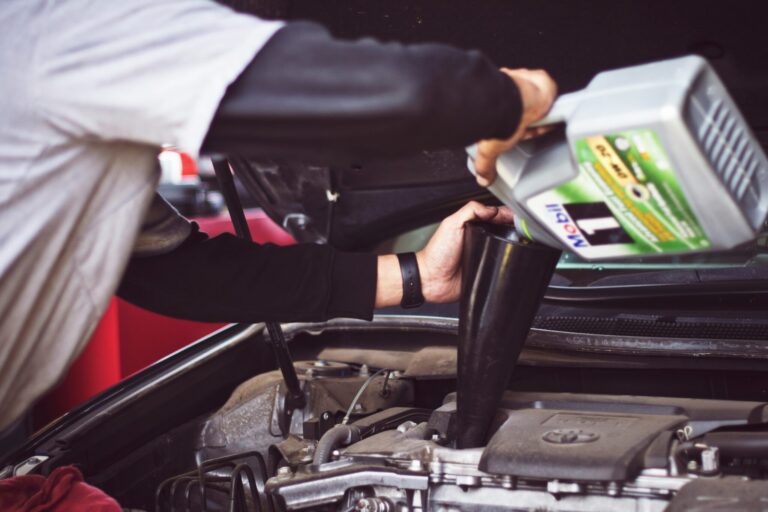
When it comes to owning a car, regular maintenance is the key to ensuring that your vehicle not only runs smoothly but also lasts for years. Whether you’re driving a brand-new model or a trusted older car, proper upkeep is essential to maintaining peak performance, safety, and value. By following a few simple, yet effective maintenance tips, you can extend the life of your car and prevent costly repairs down the road.
Here are the Best Car Maintenance Tips for Longevity and Performance that every driver should know.
1. Regular Oil Changes
Why It’s Important:
Oil is the lifeblood of your engine. It lubricates the moving parts, reduces friction, and prevents overheating. Over time, oil breaks down and becomes less effective, which can cause engine damage. Regular oil changes are crucial to keep the engine running smoothly and efficiently.
How Often to Change Oil:
Most cars require an oil change every 3,000 to 7,500 miles, but it’s important to check your vehicle’s owner’s manual for specific recommendations. If you’re using synthetic oil, you can typically extend the interval between changes.
Tip:
If you frequently drive in stop-and-go traffic or tow heavy loads, you may need to change your oil more often. Always use the recommended oil type for your vehicle, as using the wrong oil can lead to engine damage.
2. Check and Replace the Air Filter
Why It’s Important:
The air filter prevents dirt, dust, and debris from entering your engine, allowing it to “breathe” properly and perform at its best. A clogged or dirty air filter can reduce engine efficiency, lower fuel economy, and even damage the engine over time.
How Often to Replace:
In general, air filters should be replaced every 12,000 to 15,000 miles, but this can vary depending on driving conditions. If you drive in dusty areas or on dirt roads, your air filter may need to be replaced more often.
Tip:
A clean air filter improves fuel efficiency and engine performance. If you notice a drop in fuel economy or engine power, check the air filter first. Many modern cars have sensors that can alert you when the filter is dirty.
3. Monitor Tire Health and Pressure
Why It’s Important:
Proper tire maintenance is crucial for safety, fuel efficiency, and performance. Under-inflated tires can reduce gas mileage, cause uneven wear, and increase the risk of blowouts. Over-inflated tires, on the other hand, can lead to a harsh ride and excessive wear.
How Often to Check:
Check tire pressure at least once a month, and always before long trips. You can find the recommended tire pressure in your car’s manual or on the door frame (near the driver’s side).
Tip:
Tires should be rotated every 6,000 to 8,000 miles to ensure even wear. Also, inspect your tires regularly for signs of wear or damage, such as bulges, cracks, or punctures, and replace them when necessary.
4. Keep the Battery in Top Shape
Why It’s Important:
A dead battery can leave you stranded, so maintaining your car’s battery is crucial. A well-maintained battery ensures that your car starts reliably and powers all electrical components, from the headlights to the air conditioning.
How Often to Check:
Inspect your car battery for corrosion around the terminals, which can cause poor connections and lead to starting problems. You should clean the terminals if needed and check the battery’s charge once a year.
Tip:
If your battery is more than three years old, consider replacing it. Extreme temperatures, both hot and cold, can reduce battery life. Also, if you frequently drive short distances, your battery may not have enough time to recharge fully between starts.
5. Maintain Fluid Levels
Why It’s Important:
Cars rely on various fluids, including coolant, transmission fluid, brake fluid, and power steering fluid, to operate smoothly. These fluids keep critical components lubricated, cool, and functioning properly.
How Often to Check:
Check all fluid levels regularly, ideally once a month. Make sure the levels are within the recommended range, and top up if needed. If the fluids appear dirty or contaminated, it’s time for a change.
Tip:
If you notice that a fluid level is consistently low, it could indicate a leak or another problem that needs attention. Don’t ignore it, as neglecting fluid maintenance can lead to more serious issues like engine overheating or transmission failure.
6. Replace Worn Brake Pads
Why It’s Important:
Brakes are one of the most important safety features of your car, and keeping them in good condition is essential. Worn-out brake pads can cause longer stopping distances, noise, and damage to other braking components.
How Often to Replace:
Brake pads should be inspected every 12,000 miles or as recommended by your vehicle’s manufacturer. If you hear squeaking or grinding sounds while braking, it’s time to replace the pads.
Tip:
If your car is pulling to one side when braking, or if the brake pedal feels soft or unresponsive, have your brakes checked immediately. Regular brake inspections ensure safe and effective stopping power.
7. Change Spark Plugs and Wires
Why It’s Important:
Spark plugs play a vital role in the ignition system of your car, ensuring that the engine starts and runs efficiently. Over time, spark plugs can become dirty or worn out, leading to poor fuel efficiency, misfires, and even engine damage.
How Often to Replace:
Spark plugs typically need to be replaced every 30,000 to 100,000 miles, depending on the type of plugs and your vehicle. Be sure to check your owner’s manual for the recommended interval.
Tip:
Replacing spark plugs at the recommended intervals can improve fuel efficiency, reduce emissions, and restore engine power. If your car is struggling to start, stuttering during acceleration, or showing poor fuel economy, a spark plug replacement could help.
8. Keep the Cooling System in Check
Why It’s Important:
Your car’s cooling system prevents the engine from overheating by circulating coolant through the engine block and radiator. If the system fails, your engine could overheat, potentially causing permanent damage.
How Often to Check:
Inspect the coolant level every few months, especially before long trips. If your engine temperature gauge indicates that the engine is running too hot, turn off the car immediately and allow it to cool down before checking for any issues.
Tip:
Flush and replace the coolant every 30,000 to 60,000 miles, depending on the manufacturer’s recommendations. Using the correct type of coolant and keeping the radiator clean will ensure that the cooling system operates effectively.
9. Pay Attention to Belts and Hoses
Why It’s Important:
The belts and hoses in your car ensure that various components, such as the alternator, air conditioning, and power steering system, work properly. Worn or damaged belts and hoses can lead to engine failure or other expensive repairs.
How Often to Inspect:
Check the belts and hoses at least twice a year, particularly for cracks, fraying, or leaks. Replace any parts that show signs of wear before they fail.
Tip:
The timing belt should be replaced according to your manufacturer’s recommended interval, typically every 60,000 to 100,000 miles. Failing to replace a worn timing belt can cause the engine to fail, leading to costly repairs.
10. Drive Smoothly and Avoid Hard Stops
Why It’s Important:
How you drive has a significant impact on the longevity of your car. Aggressive driving, including rapid acceleration, hard braking, and speeding, can wear out components like the brakes, tires, and suspension system much faster.
How to Improve Your Driving Habits:
Drive smoothly by avoiding sudden starts and stops. Give yourself plenty of time to stop by anticipating traffic conditions. Using cruise control on highways can also improve fuel efficiency and reduce engine strain.
Tip:
Keep an eye on your car’s tire pressure and wheel alignment, as improperly aligned wheels can cause uneven tire wear and reduce fuel efficiency.
Conclusion: Protect Your Investment
Proper maintenance is the key to extending the lifespan and improving the performance of your car. By staying on top of regular maintenance tasks such as oil changes, tire checks, brake inspections, and fluid management, you’ll help your vehicle run smoothly for many years. Additionally, keeping a maintenance schedule and addressing any issues promptly can save you from costly repairs and ensure that your car continues to provide reliable service.
Remember, a well-maintained car not only performs better, but it also retains its value, making it a worthwhile investment in the long run.
By following these best car maintenance tips, you’ll be ensuring that your vehicle stays in top shape, providing you with years of driving pleasure and peace of mind.



